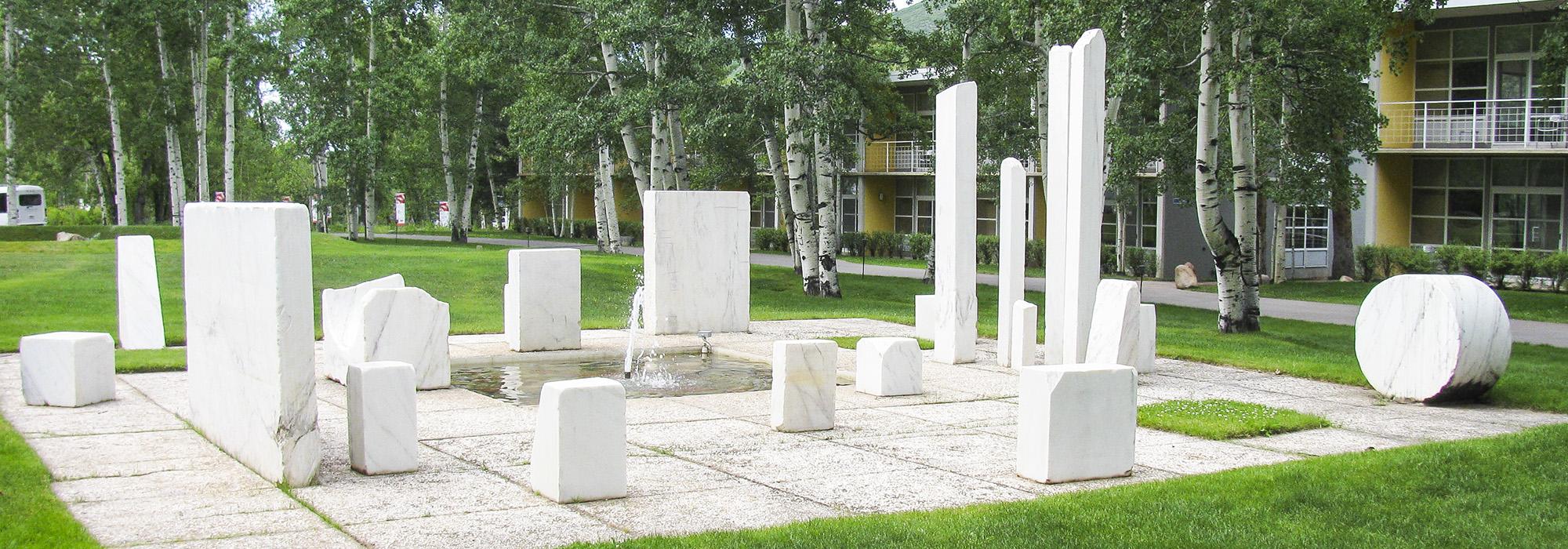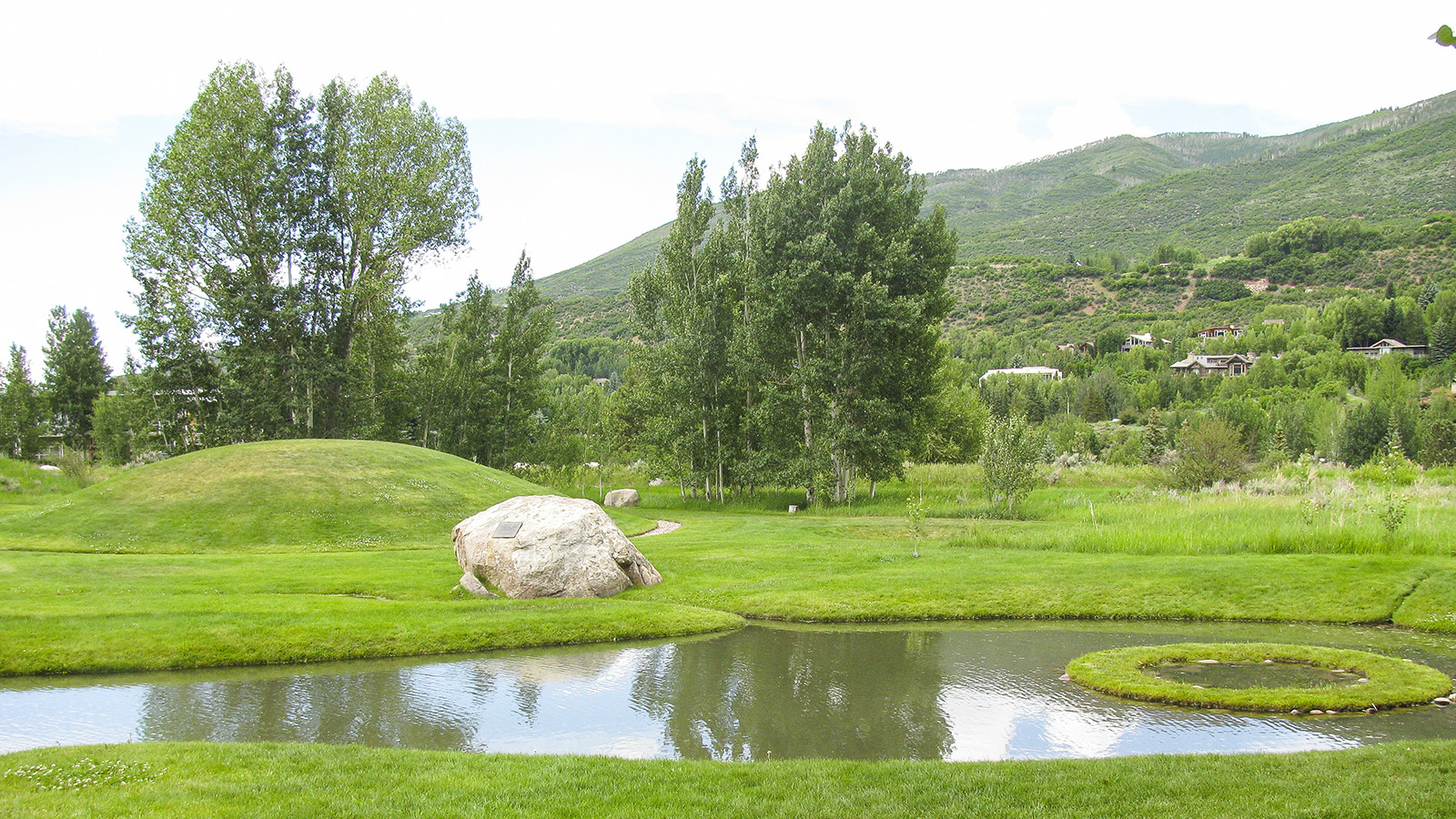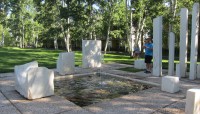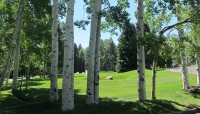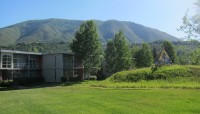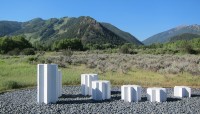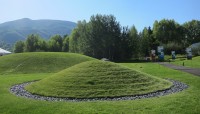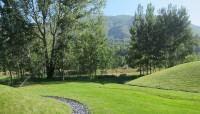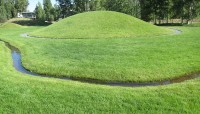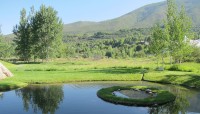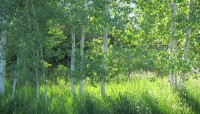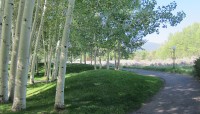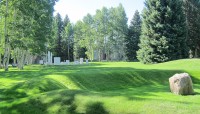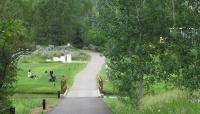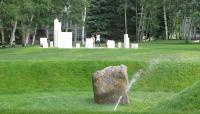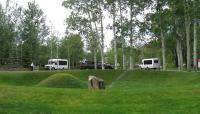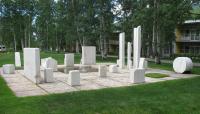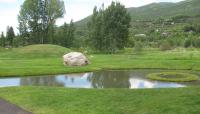Landscape Information
Austrian-born artist Herbert Bayer moved to Aspen in 1946 at the request of Chicago industrialists Walter and Elizabeth Paepke, the founders of the Aspen Institute for Humanistic Studies. The Paepkes hired Bayer to design their 40-acre campus, and as part of that commission he created several landscape installations. The first of these, Marble Garden, was created in 1955, consisting of a series of upright slabs set on a flat marble base, in contrast to the campus’ open expanses of lawn that surround it. Adjacent to Marble Garden is Earth Mound or Grass Mound, comprised of a forty-foot diameter circular mound set within expansive meadows. It is considered by many to be the first instance on record of landscape as sculpture. The capstone of Bayer’s nearly 30 years with the Aspen Institute is Anderson Park, completed in 1973. Building on elements from both previous works, Bayer created a series of meandering paths through geometric rings, depressions, and berms. These three installations within the larger campus of the Aspen Institute create an overall sensibility of modernity, experimentation, and serenity, inspiring researchers to re-view their subject matter. As early Modernist earthworks, they are precedent-setting for both their treatment of the ground plane as a medium itself and for their context, juxtaposing the contemporary mission of the Aspen Institute with the ancient typology of mounds and monoliths.



